The Chef Cooking Up Invasive Species
Asian carp are a problem, but they’re also dinner.
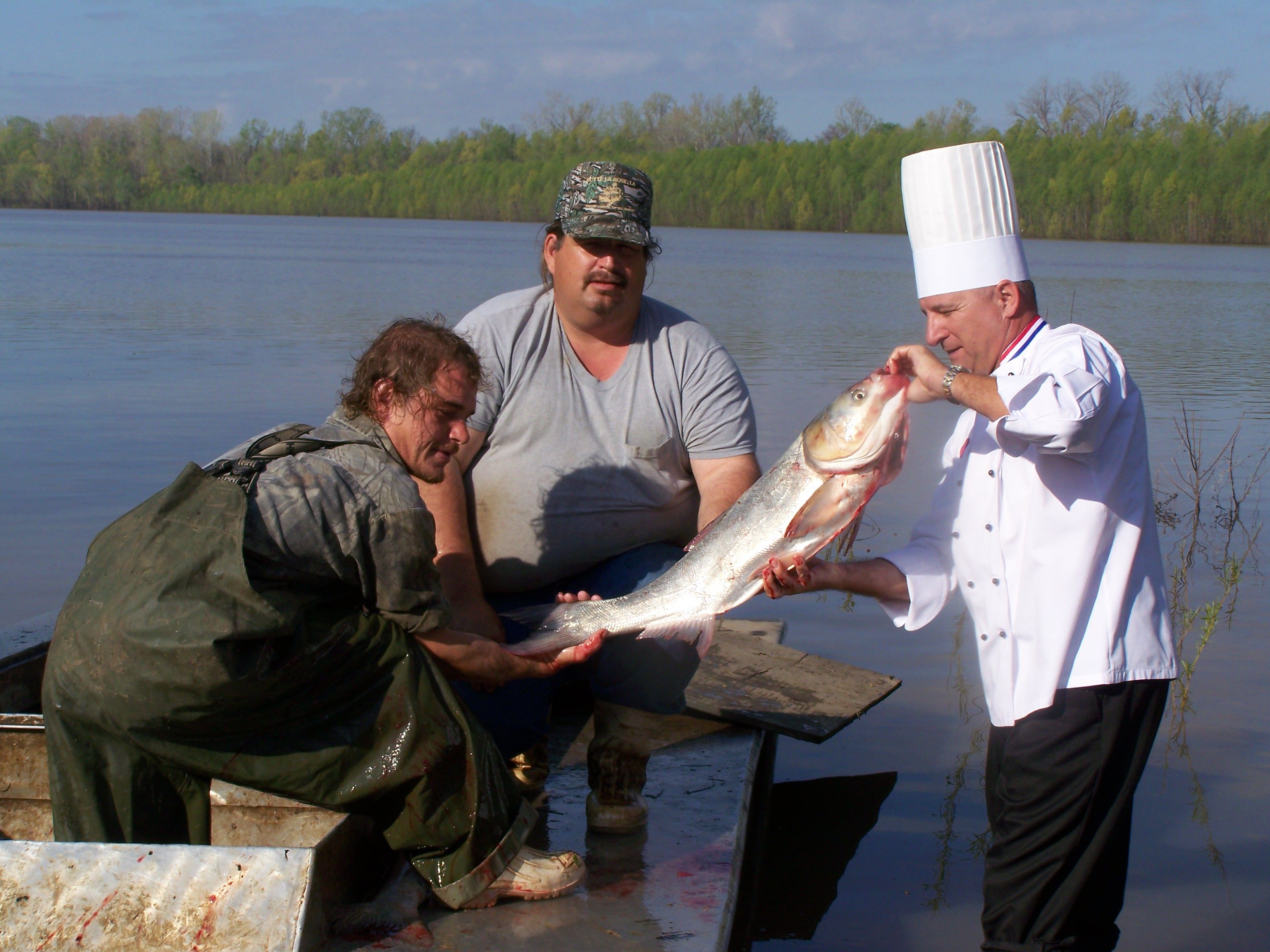
Asian carp are big fish: big in size, and big in numbers. Originally imported to the American south in the 1970s as cleaners of ponds and wastewater facilities, they escaped into the Mississippi River and now clog waterways across the United States. Easily startled by motors, they have been known to jump into boats, causing broken noses and black eyes for unwary fishermen. Some carp can weigh a hundred pounds.
Fast-multiplying and with few predators, these fish aren’t just dangerous for humans. They have big appetites for plankton, plants, and even snails, the food sources of native species. The Great Lakes are especially imperiled, and millions of dollars have been poured into research and underwater barriers to keep them away. News reports treat carp sightings near Lake Michigan like hurricanes threatening a city.
But for chef Philippe Parola, Asian carp are an opportunity, because, by all accounts, the fish is a delicious invader. After being bled, carp meat is firm and white, and they are ridiculously plentiful: By one estimate, 70 percent of the biomass in the Illinois River is Asian carp. Plus, Parola suspects that environmentally conscious fish lovers might like to eat for a cause. That’s why Parola runs Silverfin Group, Inc., which last month started selling fish cakes made from Asian carp: the first time an invasive species has been mass marketed as food in the United States.

It’s a project several decades in the making. Parola was born in France during its lean, post-war years. “Grocery stores were not all over the place in France,” Parola notes. Fishing and hunting wild game was still a way for his community, in the countryside around Paris, to put food on the table. He even remembers eating common carp, a bottom-feeding fish notorious for tasting something like mud.
When he arrived in New Orleans, in 1981, it was the last few years when French food—and chefs—still dominated the American food scene. “Today, American chefs are doing very well on their own,” he says, in his booming French-Southern accent. Parola worked as a chef and restaurant consultant in Louisiana for decades, before he became interested in Asian carp in 2009. (During a taping of an episode of Jeff Corwin’s Extreme Cuisine, two carp jumped into his boat.) Parola’s passion for Asian carp seems fueled by disdain for wasting this teeming mass of tasty fish. The idea of expensive electric barriers particularly disgusts him. “Fish is food,” Parola insists. His other catchy slogan, which he repeats often, is: “Can’t beat ‘em, eat ‘em.”
But there have been some challenges to “eating ‘em.” For one thing, the term “Asian carp” carries bad connotations. Carp’s reputation as an ugly, throwaway fish isn’t exactly endearing. Though Asian carp tastes better than the common type, the association with the mud-tasting fish Parola ate as a child still exists. They are also very bony, and Americans tend to enjoy their fish, not to mention chicken and other meats, completely boneless. (In the carp’s original swimming grounds, across Asia, fish are often served bones and all.)
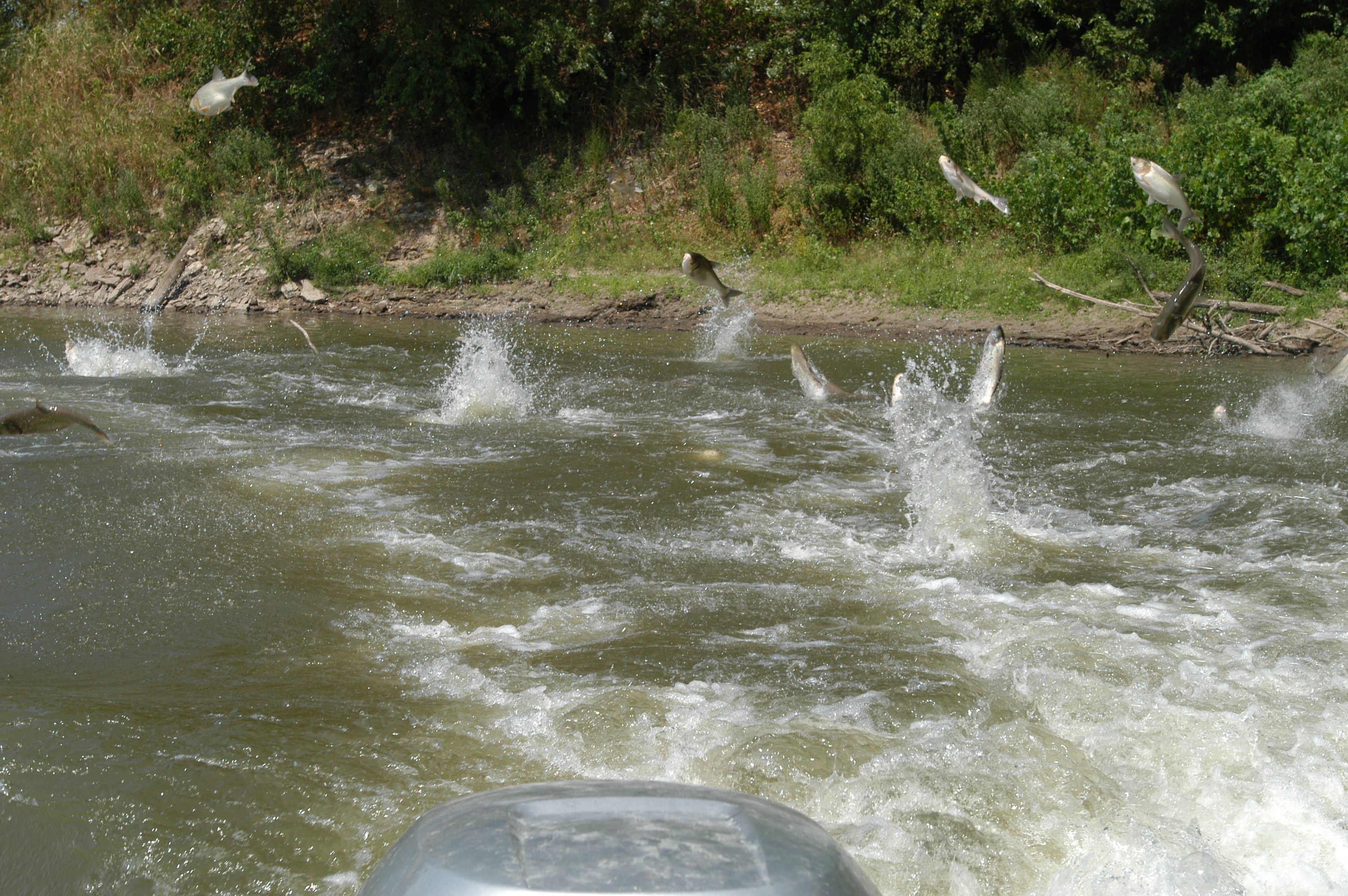
It’s a problem that other advocates of eating invasive species have run up against time and again: Many have bad qualities that outweigh their tastiness. For example, the beautiful lionfish, native to the Indo-Pacific, are overwhelming the Caribbean and Gulf of Mexico. Lionfish are fierce predators of native fish, which would be enough reason to try and remove them. But they are also covered in venomous spines and can only be caught with a handheld net or a spear, by scuba-gear wearing hunters.
Yet after removing the venomous spines, lionfish meat is safe and tasty. The National Oceanic and Atmospheric Administration’s 2010 “Eat Lionfish” campaign aimed at halting the fish’s inroads into coral reefs. Whole Foods joined in by selling lionfish in stores and sponsoring spear-hunting derbies in Florida. Though scientists say the lionfish problem is too big to be truly eradicated, their numbers have shrunk around some Florida reefs. Plus, the efforts of environmentalist chefs are making lionfish sought-after seafood, all the more so because they’re tricky to catch.
But some efforts are less successful. The state of Louisiana has a longstanding vendetta against nutrias, aquatic rodents imported in the 1930s for their fur. Nutrias breed quickly and grow up to 20 pounds in size, and wild nutria have overrun Louisiana’s waterways. Nutria pose a particularly pernicious threat: They’ve been known to dig holes in levees. In 1963, the state of Louisiana released a pamphlet called “Nutria For Home Use,” an early attempt to get ahead of furry devastation. The pamphlet described when, where, and how to hunt nutria (dusk, in a canal, and with a .22 rifle).
By 1998, the recipes in “Nutria for Home Use,” such as Sour Cream Nutria, were outdated. So the Louisiana Department of Wildlife and Fisheries recruited Parola, then a chef at the Bear Corners restaurant in Jackson, Louisiana, to help re-market nutria to consumers. Parola describes nutria as having a taste like dark turkey meat. His recipes gave nutria the French treatment, with dishes including Culotte de Nutria à la Moutarde.
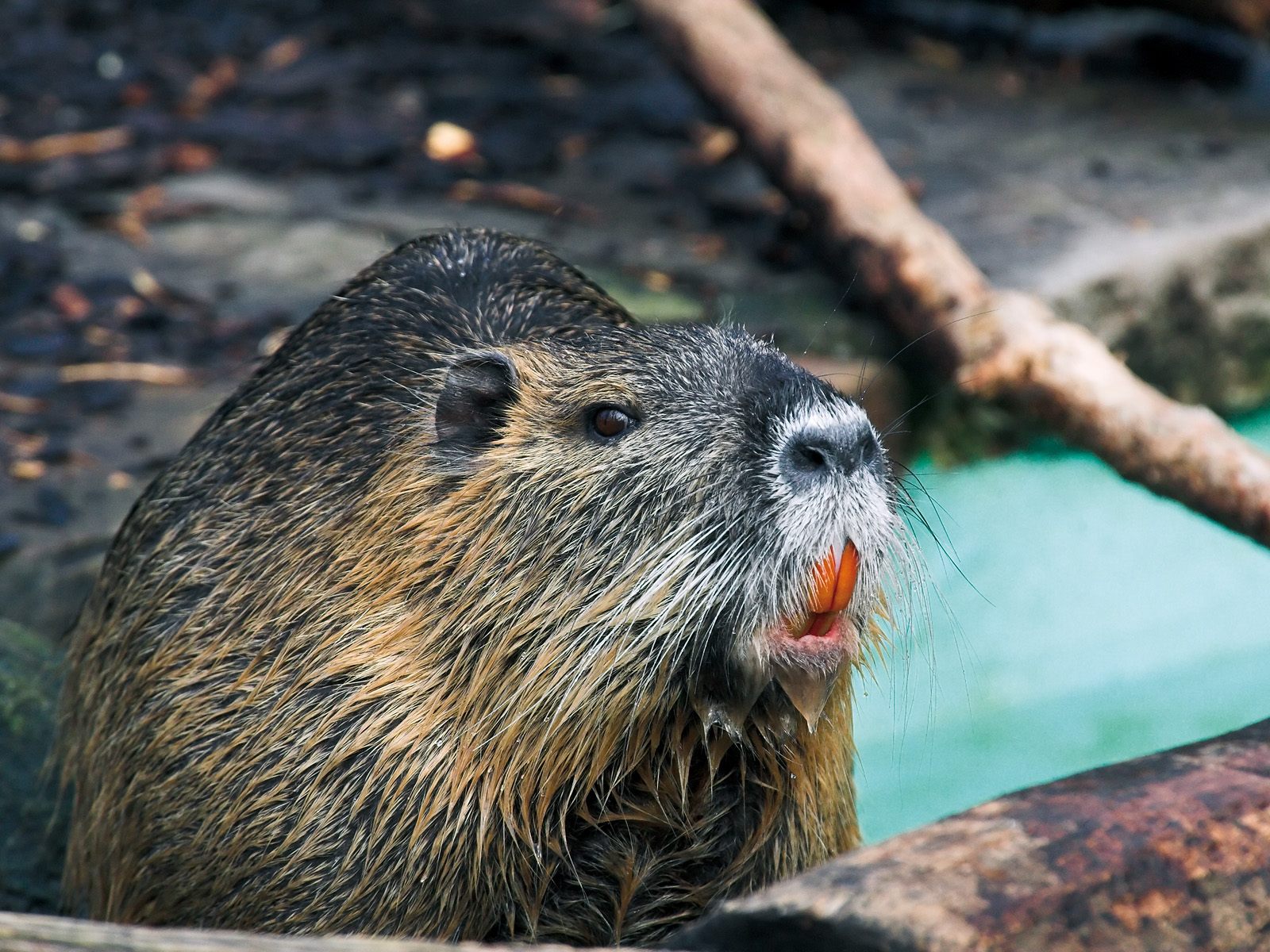
Unfortunately, Parola says, the nutria industry was nipped in the bud. To be sold across state lines, the FDA requires that mammals be caught alive and killed in slaughterhouses as opposed to being hunted, a much more difficult task. The nutria’s faint similarity to rats didn’t help, either: Few people want to eat what they consider vermin.
But there aren’t such limits on the shipping of fish, and while the name “carp” is unsexy, it lacks the same connotations as “rat.” A name change helps. Parola trademarked “silverfin” in 2012 as an alternative to carp. It’s a first step, but Parola thinks the nutria experience will help him succeed. “Now with Asian carp, I have some guidelines I can use,” he says.
So far, it seems to be going well. The carp Parola uses is caught from waterways in Mississippi, Illinois, and Louisiana, and the latter two states have supported his efforts. Two facilities in Louisiana process the fish; then, it’s shipped to Vietnam, where it’s made into crabcake-like patties, sidestepping carp’s bony problem, and shipped back. Including fishermen, Silverfin Group, Inc. currently employs around 100 people, Parola says. They’ve already netted a big customer: SYSCO, America’s largest food distributor. Silverfin cakes will be served at restaurants, and they already debuted at a University of Illinois luncheon.
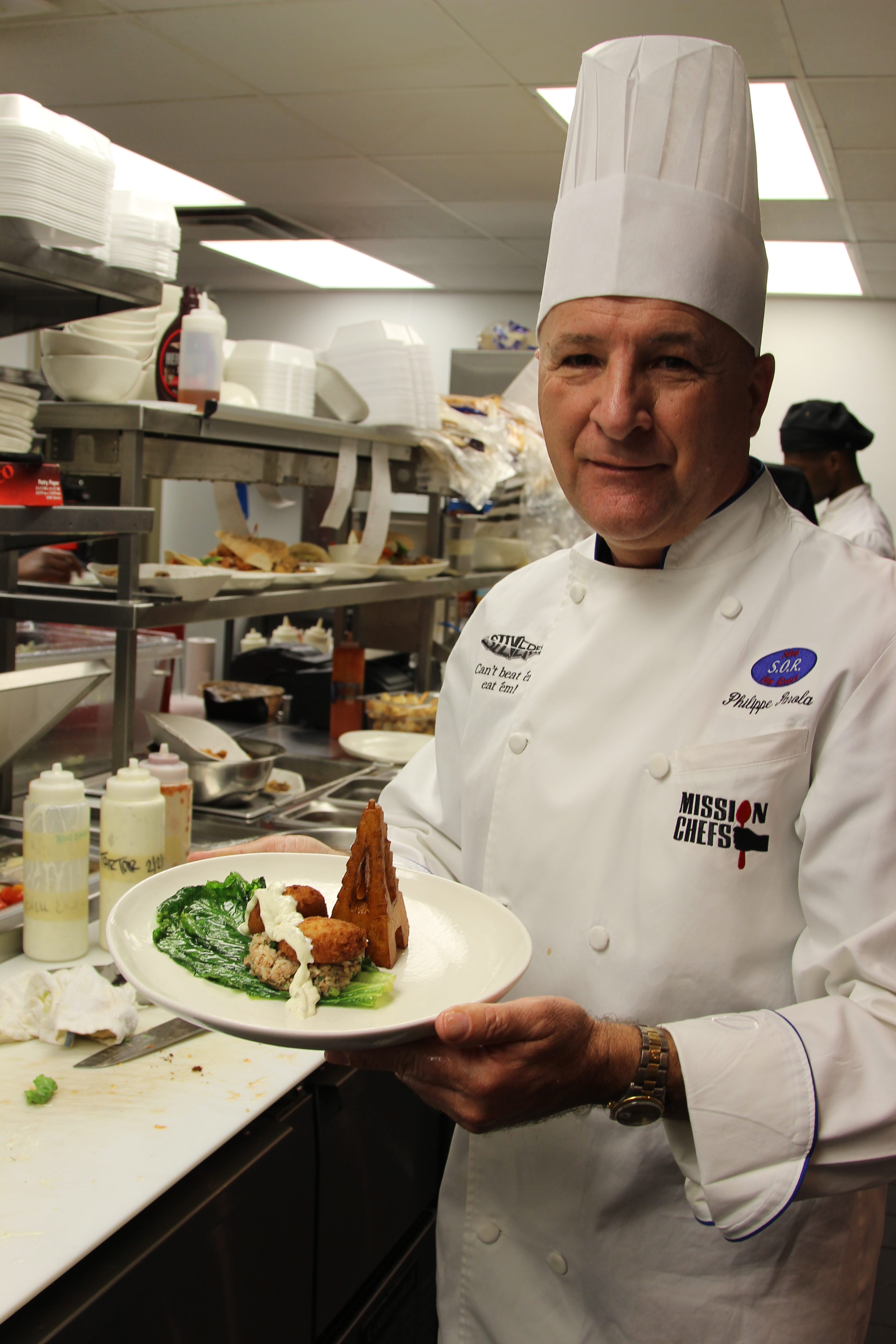
Though Illinois is currently the focus of Parola’s fish operation, he still lives in Baton Rouge. He often rhapsodizes about Louisiana, his adopted home. “Produce, herbs, fruits, vegetables, seafood, game, you name it, we got it all,” he says. There’s something personal, then, to his efforts to protect the state’s waterways. After Asian carp, Parola says, he has his eye on the fist-sized apple snail, which invaded Louisiana waterways 10 years ago. “You know, escargot?” he asks.
Gastro Obscura covers the world’s most wondrous food and drink.
Sign up for our regular newsletter.





























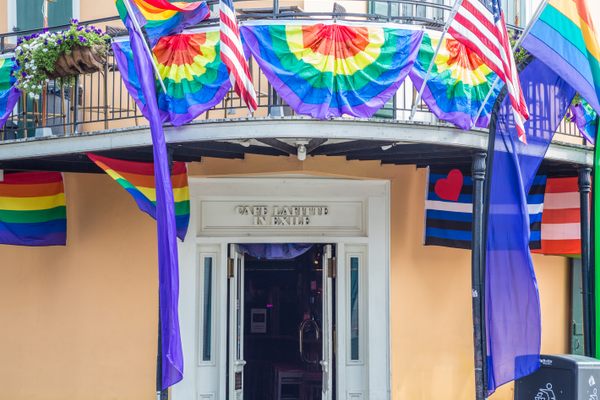
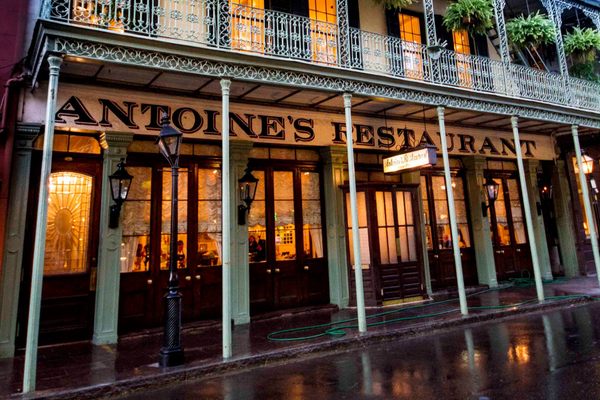

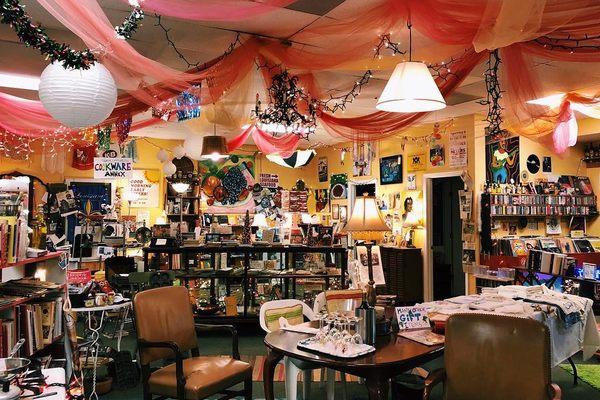


Follow us on Twitter to get the latest on the world's hidden wonders.
Like us on Facebook to get the latest on the world's hidden wonders.
Follow us on Twitter Like us on Facebook